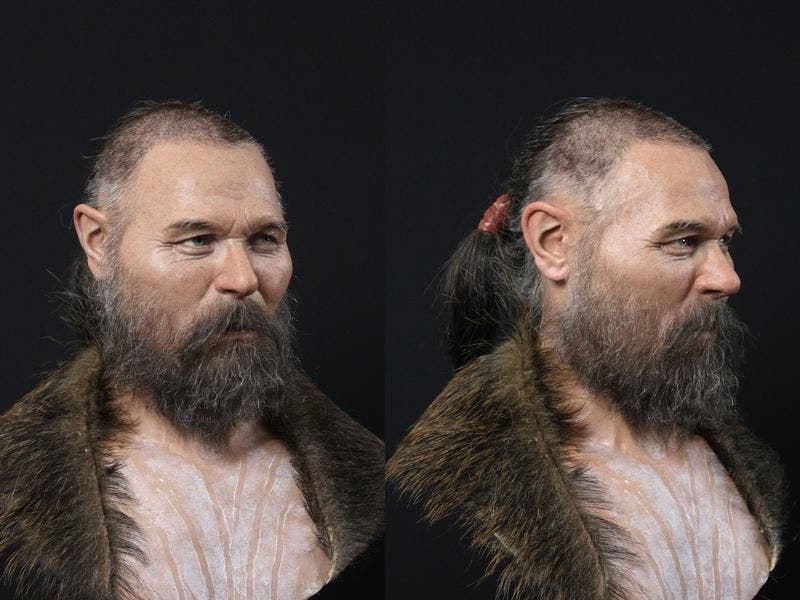
More than 8,000 years ago in Sweden, a man nicknamed “Ludvig” was murdered and had his head mounted on a spike. Now, a forensic artist employed a combination of archaeology, genetics, and computer-aided modeling to restore the man’s face as it may have looked before Ludvig met his tragic end.
The face of Ludvig
Archaeologists found the man’s cranium — along with others belonging to several adults and one infant — inside boggy sediment at the Kanaljorden site in Motala, Sweden, in 2012. The remains, which also included animal bones, were discovered on a stone platform submerged in the middle of a small lake.
All adult skulls bore signs of trauma prior to their death, which suggests they met a violent end. Remnants of wooden stakes were found inside the skulls of two of the men, one of them being Ludvig, suggesting their heads were mounted to stakes. This is a very odd ritual for those times. Decapitation and subsequent staking didn’t become common until thousands of years later, particularly in the Middle Ages.

Swedish forensic artist Oscar Nilsson was impressed by the story of this mysterious Mesolithic hunter-gatherer murder when he was contacted by archaeologists two years ago to perform a facial reconstruction. He decided to use all modern resources at his disposal to bring Ludvig’s face back to life, complete with all of Ludvig’s individual quirks.
Nilsson first scanned the skull of the Mesolithic man who died in his 50s and then printed a 3D plastic replica of it. The jaw was missing, which proved very problematic during the reconstruction process. The forensic artist estimated the size and shape of the jaw using a lengthy and complex process. Thankfully, Ludvig’s DNA was easy to sequence, revealing his ancestry, as well as important physical characteristics such as hair, eye, and skin color.

Animal remains from the site, including those belonging to boar, elk, bears, and badgers served as inspiration for other elements in the reconstruction. For instance, Nilsson dressed Ludvig in the skin of a wild boar and lent him a hairstyle inspired by these animals. The front of Ludvig’s hairstyle is similar to the short bristles on the boar’s body, while the back features a wisp of hair reminiscent of the tail. This “is of course purely speculative, but such a specific and dramatic finding calls for a matching interpretation,” Nilsson told Gizmodo.

A scar corresponding to a prominent one-inch wound on the top of his skull, which showed signs of healing, according to a 2018 study by Swedish archaeologists, was also added. A dash of white body paint on Ludvig’s chest — a fashion known to be practiced among Stone Age people — completed the man’s look.
A mysterious end
Archaeologists don’t know exactly how Ludvig died. All adult skulls retrieved at the Kanaljorden site exhibited signs of trauma. The females sustained repeated injuries on the back and side of the head, while the males suffered from a single blow on the top of the head.
Why Ludvig’s head ended up on a stake is even more of an enigma. Mesolithic hunter-gatherers tended to bury their dead, even those of their enemies. Decapitating foes, as a form of trophy hunting or warning, became a practice much later in history.
What we know for sure is that, for whatever reason, the two skulls from the archaeological dig in Sweden were at one point mounted on stakes and later laid to rest in the shallow lakebed on the stone platform with the other hunter-gatherer remains.
Now, 8,000 years later, Ludvig’s story has resurfaced in a fantastic reconstruction that blends archaeology, history, and art.
This article originally appeared in July 2021.









